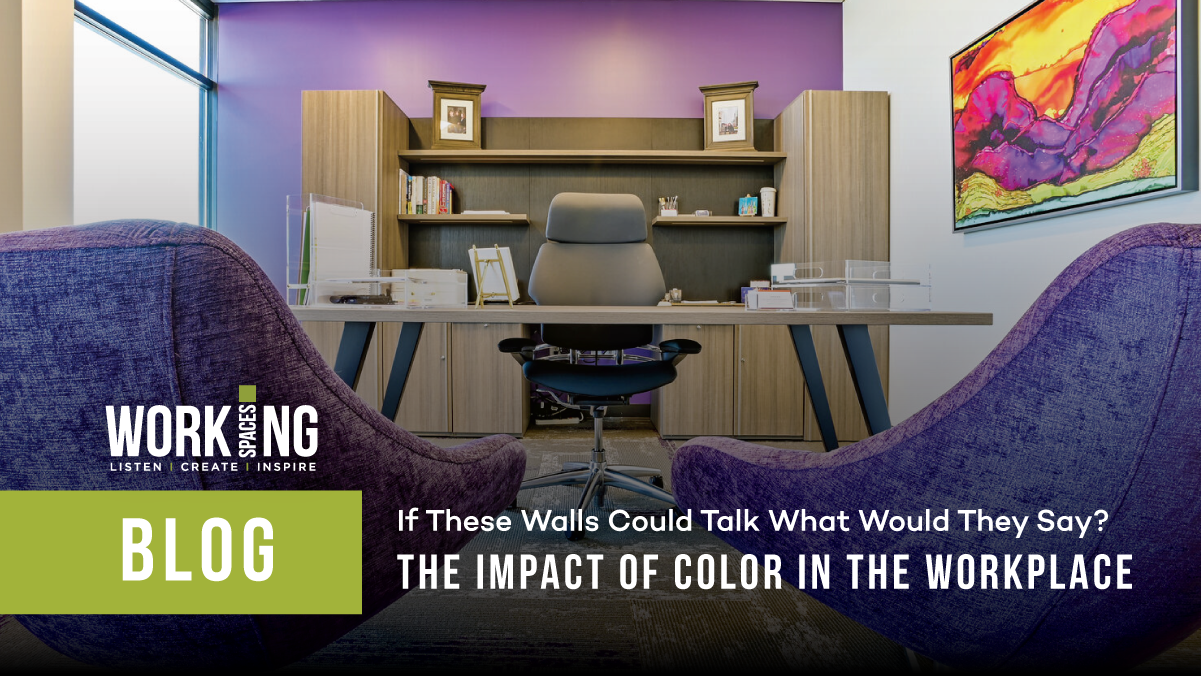If These Walls Could Talk – What Would They Say? The Impact of Color in the Workplace

Although a newer concept in corporate design, the psycho-physiological influence of color has been implemented in various cultures for millennia. The earliest historical recordings indicate that the ancient Indians, Egyptians, and Chinese used a variety of pigments and hues in their homes, communities, and medical systems to improve fatigue, mood, appetite, pain, and more. Modern formal studies of the impact of color began in the early 20th century, with concepts now being implemented in office design to initiate amazing benefits like improved productivity, boosted creativity and employee health markers like lowered blood pressure and better focus. How can Working Spaces’ design teams incorporate the perfect palettes for your needs?
The Science of Color Psychology
We’ve all heard idioms peppered with color qualifiers—who hasn’t “seen red,” been “green with envy,” “felt blue”, or looked at the world through “rose colored glasses?” Since Goethe’s initial 1400-page treatise on color and emotions in 1810, researchers have delved into the physiological reasons behind psychological responses to color. Most humans evolved to develop tricolor vision, and through the eyes and optic nerves, take in stimuli that transmits safety information about the environment. Different colors pacify or excite the nervous systems, and resulting endocrine changes create various mental and emotional states in response. Modern workplace design incorporates these concepts to optimize both flow and wellness.
Pigments for Productivity
Of the four psychological primary colors used in interior design, green packs the most powerful punch when it comes to promoting productivity in the workplace. Not only can shades of green in wall cladding, desks, and office furniture inspire innovation and boost creativity through a sense of vibrancy, green’s reminiscence of nature encourages balance between body and mind for reduced anxiety and better performance.
Colors for Creativity
Albert Einstein once said that “Creativity is intelligence having a little fun.” While your organization may attract top talents, supporting them in a way that allows for creative exploration and innovative problem-solving requires corporate design promotional of a sense of trust and communication. Shades of blue inspire calm, and relaxed employees with lower heart rates, blood pressure, and respiration brainstorm more confidently and collaborate more constructively with others.
Hues for Happiness
When you think of a bright, happy experience, which color comes to mind? Shades of yellow have longer wavelengths of light than cooler hues like blues and greens, which makes them inherently more “radiant” in temperature and more stimulating neurologically. Warm colors like yellow and orange induce a sense of optimism and enthusiasm, which naturally boost energy and endurance while being a complementary accent to other colors in the spectrum.
Full Spectrum Support with Working Spaces
Whether your workplace design plans are as simple as upgrades to furnishings and finishes for improved function and flow, or as complex as a complete rebrand, remodel, or new build, Working Spaces’ offers the insight and experience needed to deliver unparalleled optimization of your investment. From initial inquiry to final inspection, we are dedicated to a perfect partnership that exceeds your expectations with flying colors. Call our design team today to green light your company’s success!
